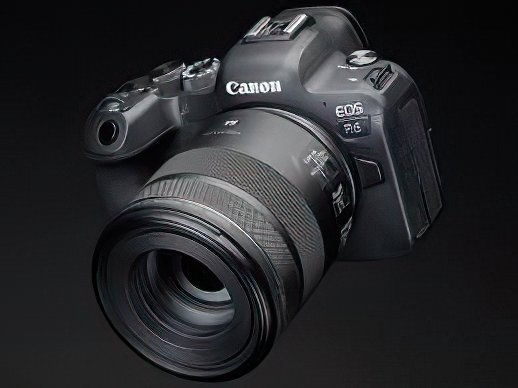10 ASSURED KEY DIFFERENCES YOU WOULD LIKE TO KNOW BETWEEN MIRRORLESS AND DSLR CAMERAS

What are the critical differences between DSLR and mirrorless cameras? A great debate has been going on in the world since the last decade, the discussion of mirrorless vs DSLR cameras! Which is better? Which are more professional? And which of them can I use as a beginner regarding features and price?
Well, photography has undoubtedly changed in the last decade since mirrorless cameras first arrived. Still, here we will guide you into these two categories, revealing the most essential ten differences between them to give you all the answers you seek to buy a suitable camera for your skills and budget.

Today mirrorless cameras are the premium and default choices and style for the world’s biggest camera brands – even the doyens of DSLRs, like Canon and Nikon.

That was not the way back in the early days of the format; the course then was easy – if you were a pro, you tended to pick up a DSLR.
If you are a Hobbyist or amateur in that field, bothered by weight or portability, or occasionally take some pictures, you would lean towards mirrorless counterparts.
But now, the roles are somewhat reversed. And if you’re an entry-level user, you might be more likely to go for a cheaper DSLR, given they remain the most affordable way to get a camera with a built-in viewfinder. The latest and greatest technology is now found in mirrorless cameras.

And for those in-between beginners and pros, there’s now more choice than ever before, which can make choosing the right camera tech for you somewhat tricky, but calm yourself; here we will try to help and give you the ten critical differences between mirrorless and DSLR cameras to choose your most convenient camera.
KEY DIFFERENCES BETWEEN MIRRORLESS AND DSLR CAMERAS
Let’s start with the basics and look at the critical differences between the two types of cameras.
The critical difference is in its name; for the DSLR cameras, DSLR stands for Digital Single Lens Reflex, which works by the light hitting a mirror angled at 45 degrees. That light goes straight up into an optical viewfinder, allowing you to see precisely what the lens is looking at. This is a true optical path, with no digital processing in the middle.
When you’re ready to take a photograph, that mirror moves out of the way – to reveal the image sensor – and if you’ve used one in the past, you’ll be familiar with the satisfying (but fairly loud) noise it makes as it does so.

Fujifilm X-T4
View at eBay
But as for the mirrorless cameras, they don’t have a mirror. With these cameras, the light passes through the lens and straight onto the sensor to be processed. It’s then displayed either on the monitor on the back of the camera or in the electronic viewfinder (EVF), which is, in essence, a tiny monitor. This time, when you take a picture, the camera is simply recording what is on the sensor at that moment in time.
These days, relatively few new DSLRs are introduced to the market, but you can still buy plenty.
So, what would be the most advantages you can find in the DSLR now? They can offer:
1- tend to have excellent handling.
2- these were the bigger of the two; of course, that is not necessarily an opposing advantage, as it can help when shooting with big telephoto lenses (and big hands). These days though, mirrorless cameras can be just as significant as DSLRs.
3- offer fantastic image quality.
4- awe-inspiring battery life – which is, in my opinion, one advantage that doesn’t look set to go away for a while.
5- There’s a vast range of lenses available for DSLRs, While there are slightly fewer options for mirrorless cameras

Canon EOS R6
View at eBay
Then what are the advantages of mirrorless cameras?
By taking away the mirror,
1- the key is that since they don’t need that big clunky mirror setup, they can be smaller and lighter than their equivalent DSLR counterparts.
2- Some of the tasks of the camera, like autofocusing, can take place on the sensor itself, leading to super-quick focusing speeds.
3- with no mirror to move out of the way, frame rates aren’t limited so much by physicality. Mirrorless cameras routinely offer at least 10fps, with some high-end models delivering 20fps or 30fps at full resolution, with continuous autofocus between each shot.
4- There’s no generally discernible difference between image quality in DSLRs and mirrorless cameras, no matter which you choose. Not like earlier when mirrorless cameras tended to use smaller sensors than DSLRs.
5- the super high-resolution viewfinders on the current crop of high-end mirrorless cameras. They show a more accurate reflection of what your final image will look like and allow you to see a preview of your image after you’ve shot it.
So, by taking away the mirror, mirrorless cameras give you several advantages (and very few disadvantages).
Nevertheless, DSLR cameras have their advantages too if you are looking for something in particular, and definitely for beginners.
affiliate disclosure
If you kindly purchase through the links on this page, I may receive a small commission. You will not charge more, and maybe you will have a discount on particular products; it’s a win/win situation, and I will be delighted and honored for your trust in my review. Any article I write about is based on my experience and honest opinion. You must be sure of one thing; I only write reviews about services and products I use, like, and believe in.





